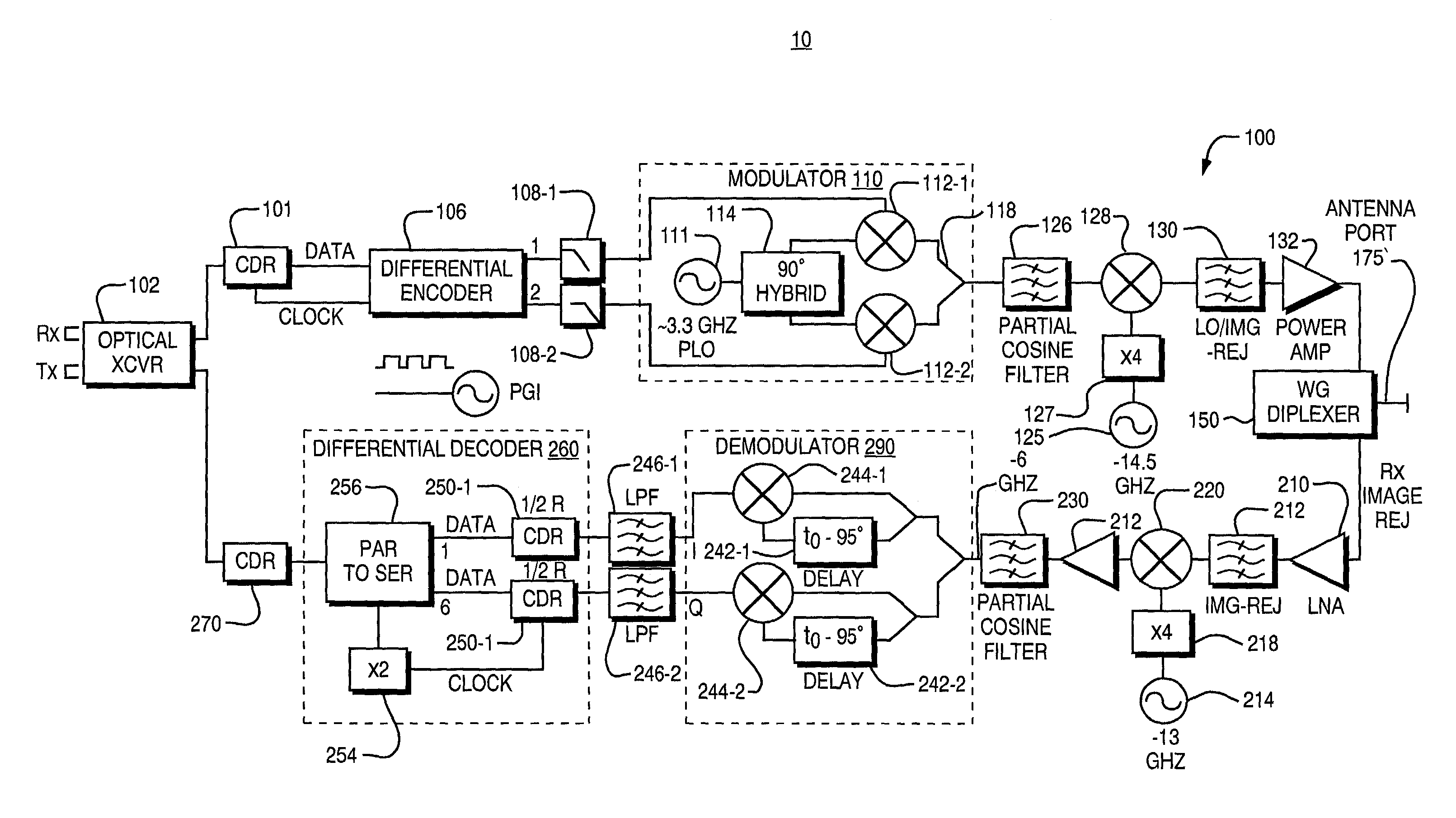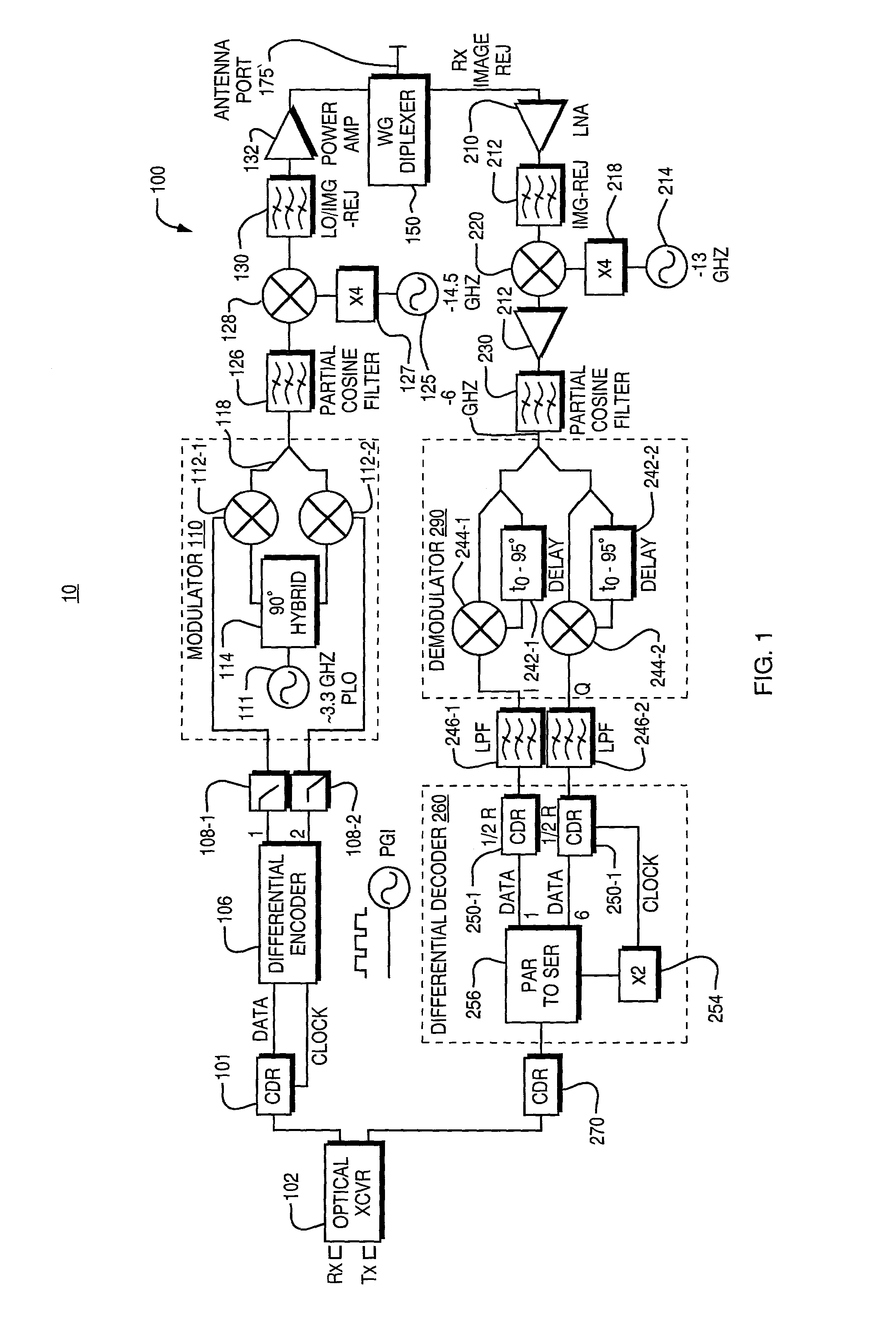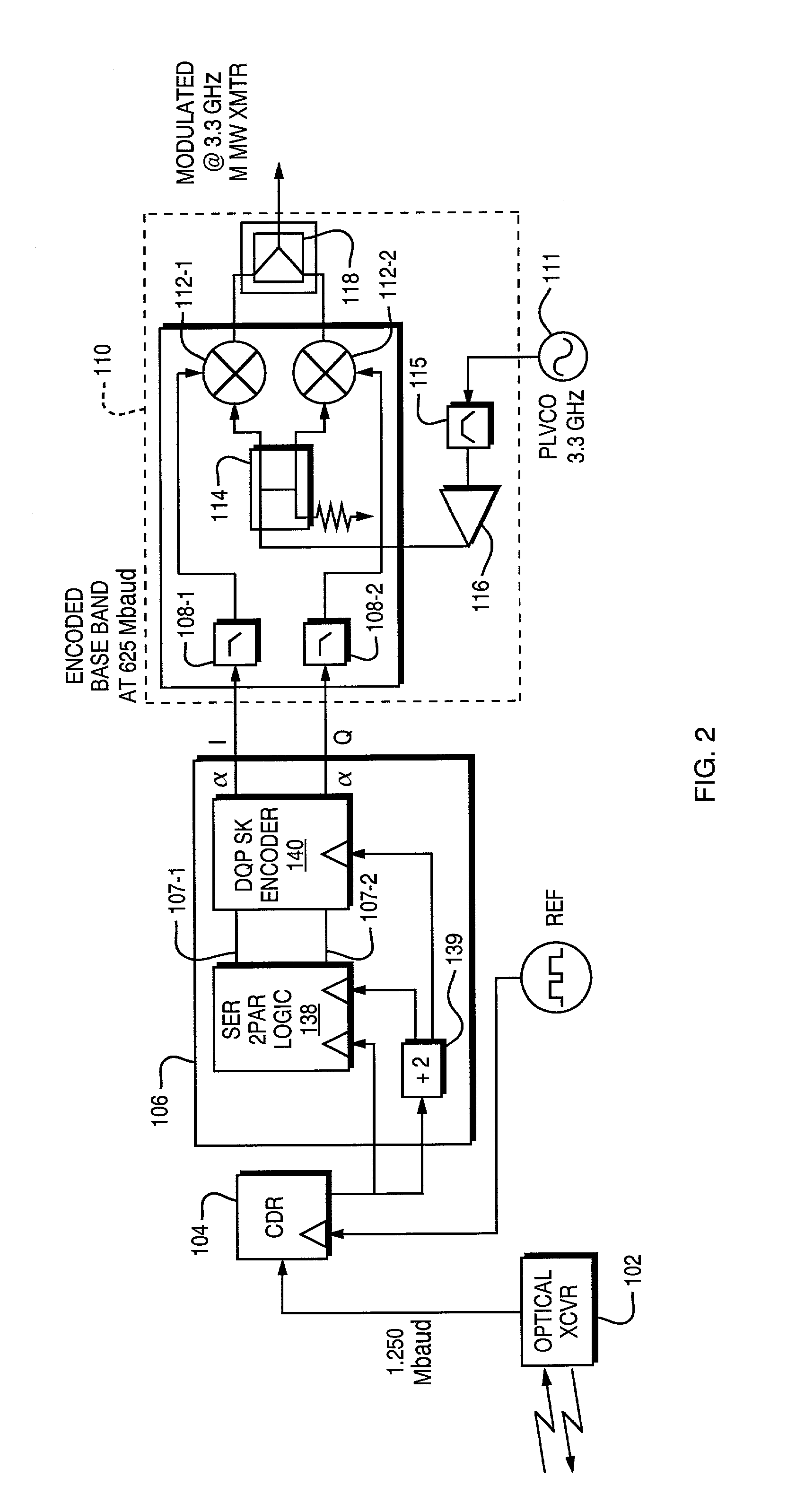Architecture for wireless transmission of high rate optical signals
a wireless transmission and optical signal technology, applied in wireless communication, line-of-sight transmission, wireless communication, etc., can solve the problems of reducing the service life of the device, and reducing the cost of the device, so as to minimize intersymbol interference and low noise
- Summary
- Abstract
- Description
- Claims
- Application Information
AI Technical Summary
Benefits of technology
Problems solved by technology
Method used
Image
Examples
Embodiment Construction
[0024]A description of preferred embodiments of the invention follows.
[0025]FIG. 1 is a block diagram of an optical to wireless microwave signal converter 10 according to the invention. The converter 10 includes an optical to electrical or microwave transmitter portion 100 and an electrical to optical or microwave receiver portion 200. It should be understood that in a typical point to point system, there will be two converters 10, each associated with one of two end points of a communication link.
[0026]The microwave transmitter portion 100 uses an optical transceiver 102 to receive an input optical signal. The optical signal is a high data rate protocol encoded signal such as a SONET signal. It should be understood that other types of optical transport signals such as Gigabit Ethernet (GE) signals may be converted to microwave signals using the principles of the present invention. The optical transceiver converts the optical signal to an electric signal, which in turn is fed to a C...
PUM
 Login to View More
Login to View More Abstract
Description
Claims
Application Information
 Login to View More
Login to View More - R&D
- Intellectual Property
- Life Sciences
- Materials
- Tech Scout
- Unparalleled Data Quality
- Higher Quality Content
- 60% Fewer Hallucinations
Browse by: Latest US Patents, China's latest patents, Technical Efficacy Thesaurus, Application Domain, Technology Topic, Popular Technical Reports.
© 2025 PatSnap. All rights reserved.Legal|Privacy policy|Modern Slavery Act Transparency Statement|Sitemap|About US| Contact US: help@patsnap.com



